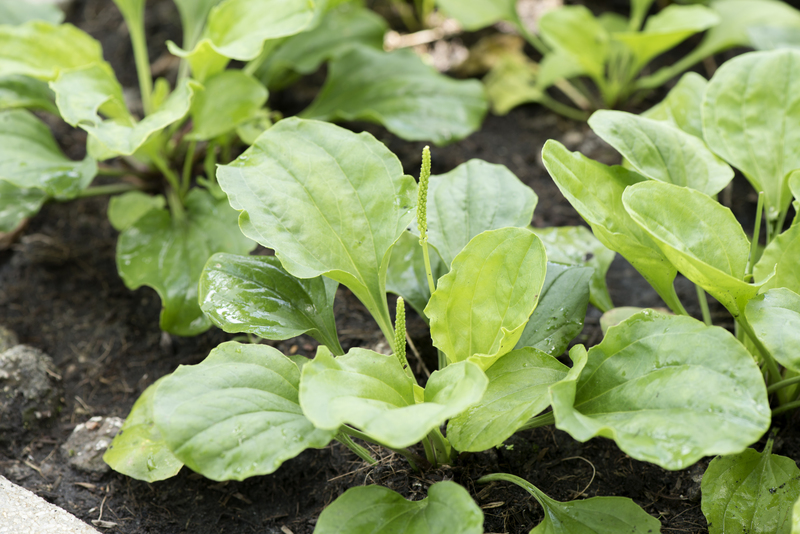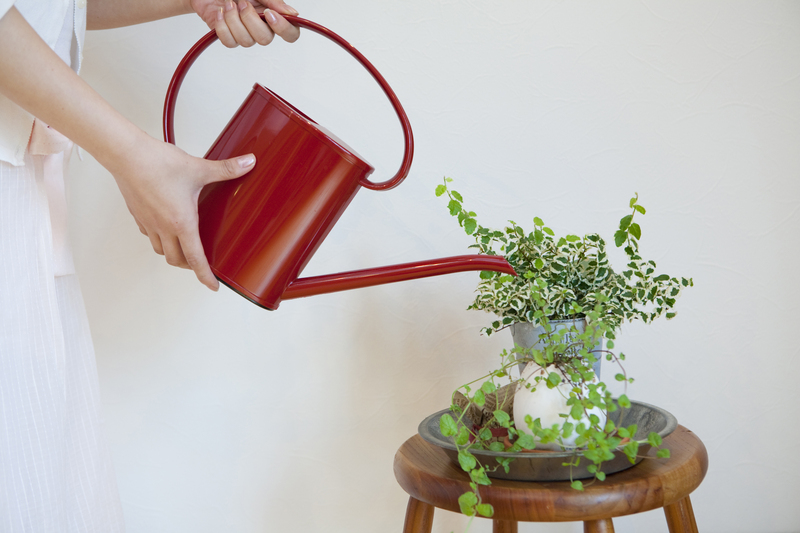Gardening for a Cooler Planet and Healthier Climate
Posted on 15/09/2025
Gardening for a Cooler Planet and Healthier Climate: An Eco-Friendly Approach
In the face of rapid climate change and urbanization, one of the simplest yet most impactful actions individuals can take is engaging in gardening for a cooler planet and a healthier climate. From home backyards to sprawling community gardens, these green spaces have profound effects on temperature moderation, biodiversity, carbon sequestration, and personal wellbeing. This comprehensive guide uncovers how gardening can contribute to climate solutions, benefits you can reap, and actionable steps to transform your plot of earth into a climate ally.

Why Gardening Matters for the Planet and Climate
The consequences of global warming--rising temperatures, erratic weather, and biodiversity loss--demand urgent action. While policy reforms and technological advances are vital, individual actions at the local level can meaningfully slow environmental degradation. Climate-friendly gardening is one such action that yields benefits across multiple domains. But why does gardening truly matter?
- Urban Heat Reduction: Plants and soil absorb less heat than concrete, cooling the environment.
- Carbon Capture: Healthy plants and soil absorb atmospheric carbon dioxide, a major greenhouse gas.
- Biodiversity Promotion: Native gardens support local birds, pollinators, and other wildlife.
- Soil Health: Diverse plantings prevent erosion, foster healthy soil microbes, and improve water retention.
By prioritizing gardening for a cooler planet, gardeners become pivotal actors in the movement toward a healthier climate.
How Gardens Cool Our Planet
The Science Behind Plant Cooling Effects
It's not just imagination--gardens genuinely cool temperatures. Through a process called evapotranspiration, plants absorb water from the soil and release it as vapor through their leaves. This process acts much like natural air conditioning, reducing surrounding heat. Trees provide shade, further minimizing heat absorption by buildings and pavement.
- Evapotranspiration can lower local temperatures by several degrees, especially during hot summer months.
- Tree Canopies offer shade that can reduce the urban heat island effect rampant in cities.
- Vines and Green Roofs insulate buildings, trimming household energy use and emissions.
Soil's Role in Climate Regulation
Healthy soil acts as a massive carbon storehouse and a cooling agent. Organic matter and plant roots shield the earth's surface from direct sun, slow evaporation, and foster microbial life that cycles nutrients and stores carbon.
- Mulching keeps soil cool and moist, reduces water runoff, and supports root health.
- Composting increases carbon-rich humus, furthering soil's ability to sequester carbon dioxide.
In summary, climate-beneficial gardening doesn't just decorate--it actively cools.
Gardening as a Climate Solution
Carbon Sequestration and Reduction
Plants are natural carbon vacuums. As they grow, they draw carbon dioxide through photosynthesis, locking it into leaves, stems, and especially roots. Perennial plants, trees, and healthy soils can sequester large amounts of carbon over time.
- Native Trees sequester the most carbon and have long-lasting impact.
- Deep-rooted Prairie Grasses and perennials trap carbon below ground, storing it safely for years.
- Composting and minimal tillage prevent carbon loss and enhance soil's carbon-holding capacity.
Supporting Biodiversity and Pollinators
Gardening for a healthier climate also supports wildlife. Biodiverse gardens are sanctuaries for birds, bees, butterflies, and beneficial insects--all of which are critical for pollination and pest control.
- Planting native species provides nectar and habitat for local creatures.
- Meadow gardens and no-mow areas create refuge for ground-nesting insects and small mammals.
- Ponds and water features support amphibians, which help control mosquito populations.
By embracing biodiversity, we strengthen natural systems that are increasingly under threat and enhance ecosystem resilience.
Practical Steps: Gardening for a Cooler Planet and Healthier Climate
1. Choose Climate-Friendly Plants
Native and drought-resistant species are adapted to local climate conditions. These plants require less water and care, thrive in regional soils, and support more wildlife. When planning your climate-resilient gardens:
- Research native plant lists for your area.
- Include a variety of flowering plants, shrubs, and trees for multi-layered habitat.
- Add deep-rooted perennials and prairie grasses for superior carbon storage.
2. Mulch and Compost Generously
Compost not only reduces food waste but enriches your soil, promotes water retention, and builds carbon. Mulching (with wood chips, leaves, or straw) cuts down on weeds, keeps soil moist, and shields earth from heat.
- Apply a 2-4 inch layer of mulch around plants.
- Maintain a backyard compost pile to recycle plant and kitchen scraps.
3. Reduce Lawn Area
Lawns consume vast resources--water, fuel for mowing, fertilizers, and pesticides. Replacing grass with wildflower meadows, vegetable patches, or pollinator gardens lowers chemical dependence and creates habitat for pollinators.
- Transform high-maintenance grass into edible gardens or native plantings.
- Prioritize clover or drought-tolerant ground covers over traditional turfgrass.
4. Plant Trees and Shrubs Wisely
Trees are powerful allies for gardening for a cooler planet. They shade homes, absorb carbon, anchor soil, and shelter wildlife.
- Plant deciduous trees on the south and west sides of buildings to provide summer shade.
- Choose species suitable for your region that require minimal supplementary water.
5. Go Organic and Reduce Chemical Use
Pesticides and synthetic fertilizers damage soil microbes and pollute waterways. Shifting to organic gardening methods not only nurtures a healthier climate but also produces safer food.
- Use compost and natural amendments to feed the soil.
- Promote pest-eating wildlife by planting diverse flowers and avoiding broad-spectrum pesticides.
6. Collect Rainwater and Conserve Water
Climate-adaptive gardens rely on efficient water use. Rain barrels, drip irrigation, and mulching all help preserve this precious resource.
- Install rain barrels to harvest roof runoff.
- Water deeply but infrequently to foster resilient root systems.
- Add mulch to reduce evaporation loss.
7. Support Community Gardening
Join or form local community garden projects. These gardens not only increase green space but foster climate action, resilience, and shared knowledge at a larger scale.
- Advocate for parkland and vacant lot gardens in your area.
- Share surplus harvest with neighbors or local food pantries.
The Personal Benefits of Climate-Conscious Gardening
Embracing gardening for a healthier climate offers a bounty of personal rewards alongside planetary ones:
- Better Physical Health: Outdoor activity builds strength, reduces stress, and can provide fresh, pesticide-free food.
- Mental Wellness: Connection with nature enhances mood, reduces anxiety, and fosters mindfulness.
- Community Engagement: Sharing seeds, harvests, and knowledge knits communities together and builds resilience.
- Education: Gardening teaches children and adults about local ecosystems, the food cycle, and climate solutions in action.
Overcoming Common Challenges in Climate-Friendly Gardening
Tackling Urban Constraints
Not everyone has a large backyard or open space. Fortunately, urban gardening solutions abound:
- Container gardens on patios and balconies for herbs and small vegetables.
- Vertical gardening systems or espaliered fruit trees for tight spaces.
- Community plots or rooftop gardens that maximize limited city green space.
Managing Water Scarcity
In places with frequent droughts, climate-smart choices are critical:
- Opt for drought-tolerant native plants.
- Install efficient irrigation systems like soaker hoses or drip irrigation.
- Use greywater (laundry or sink water) where permitted for non-edible plants.
Dealing With Pests Organically
Avoid chemicals and foster natural balance instead:
- Attract pollinators and beneficial insects with flowering plants like yarrow, alyssum, and dill.
- Encourage birds and amphibians that naturally control pests.
Frequently Asked Questions about Gardening for a Cooler Planet
1. How much can an individual garden reduce carbon emissions?
While small gardens alone won't halt global warming, widespread adoption can collectively make a measurable difference. The more perennial, tree, and native plant cover in a region, the more carbon is drawn from the air and stored in the earth.
2. What are the best plants for climate-friendly gardening?
Focus on species native to your area, as they're best adapted to local extremes. Native trees, deep-rooted prairie grasses, wildflowers, clover, and perennial herbs are excellent choices for maximizing cooling and carbon capture.
3. Can container gardening help the climate?
Yes--growing food or pollinator plants in containers reduces the carbon footprint of store-bought food, insulates patio areas, and supports urban wildlife, especially if many households participate.

Resources for Getting Started: Tools and Inspiration
- Native Plant Societies: Offer plant lists, gardening advice, and community events tailored to your climate.
- Climate-Friendly Garden Certifications: Recognize gardens that meet criteria for biodiversity, carbon sequestration, and sustainable practices.
- Local Extension Services: Provide region-specific advice on soil, pest management, and plant choices.
Conclusion: Every Plot Counts in Gardening for a Cooler Planet
Gardening for a cooler planet and healthier climate is both a joyful pastime and a meaningful contribution to the world. Whether you steward a single container, a small backyard, or a thriving community garden, your work matters. By making thoughtful choices--from the plants you select to the way you manage water and soil--you become part of a growing global movement.
In the end, each climate-sensitive garden is a living solution: cooling neighborhoods, capturing carbon, fueling biodiversity, and nourishing body and mind. Start small, experiment boldly, and know that every green inch you cultivate brings us closer to a resilient, healthier, and cooler planet.

